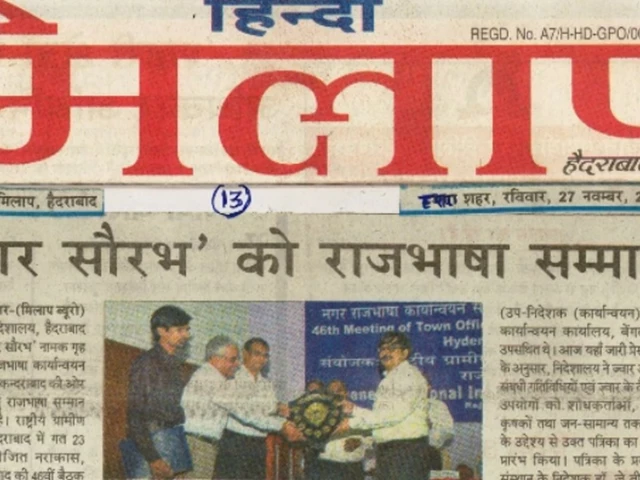When Cyclone Fengal slammed into the coast near Puducherry on November 30, 2024, at 10:30 p.m. IST, it didn’t just bring wind—it brought chaos. Three people died in Chennai alone, including a migrant worker electrocuted while trying to withdraw cash from a flooded ATM, his body later found floating near a drainage channel. The India Meteorological Department (IMD) confirmed the storm made landfall with sustained winds of 70–80 km/h, gusting to 90 km/h, after peaking at 85 km/h earlier that morning. Puducherry got more than 40 centimeters of rain in under 24 hours—the worst downpour in three decades. Streets turned to rivers. Cars floated. Power lines snapped. And for thousands, the nightmare had only just begun.
How a Quiet Depression Became a Deadly Storm
It started quietly. On November 25, 2024, a low-pressure system churned over the Bay of Bengal, barely registering on radar. But by November 26, the Joint Typhoon Warning Center (JTWC) issued a Tropical Cyclone Formation Alert as the system began moving north, parallel to the Coromandel Coast. What followed was a textbook intensification: by November 30, just four days later, Fengal had become a cyclonic storm. The IMD’s director general, Mrutyunjay Mohapatra, later called it "a classic case of rapid coastal strengthening," fueled by unusually warm sea surface temperatures and low wind shear.What made Fengal dangerous wasn’t just its strength—it was its timing. Landfall occurred just after midnight, when most people were asleep. Emergency alerts had been issued, but many didn’t hear them. In Villupuram District, where rainfall exceeded 35 cm, entire neighborhoods were submerged before dawn. The Tamil Nadu State Disaster Management Authority (TNSDMA) activated its helplines—1070 for state-level aid and 1077 for district responses—by 4 a.m. on November 30. They received over 12,000 calls in the first 12 hours.
Chaos on the Ground: Airports, Beaches, and Broken Systems
Chennai’s Meenambakkam Airport shut down completely from 9 p.m. on November 30 until 7 a.m. on December 1. Over 120 flights were canceled, stranding more than 15,000 passengers. Airlines like IndiGo and Air India issued travel advisories, but many travelers only learned of cancellations when they arrived at the terminal—some already hours late.In Puducherry, the government closed all schools on November 29, a move that saved lives. But beaches? Those stayed crowded until the last minute. Marina Beach, Pattinapakkam, and Edward Elliot Beach were packed with selfie-takers and street vendors right up until 8 p.m. on November 30. The Puducherry Police eventually had to deploy loudspeakers on patrol vehicles to order people inland. By midnight, the tide had swallowed the promenade.
Even basic services failed. The electrocution victim—a 34-year-old laborer from Bihar—was trying to withdraw ₹2,000 from an ATM near T. Nagar. The machine was submerged, its casing cracked. A live wire, exposed by floodwater, had been dangling since 8 p.m. No one had cut the power. His phone, still in his hand, showed three missed calls from his family. They never got a reply.
What the Experts Saw Coming—and What Was Missed
The IMD issued red alerts for Tamil Nadu, southern Andhra Pradesh, Kerala, and Karnataka. Forecast models predicted 30–50 cm of rain. They got it right. But the real failure was in infrastructure preparedness."We knew the rainfall would be extreme," said Dr. Anjali Nair, a climatologist at the Indian Institute of Tropical Meteorology. "But no city in Tamil Nadu has a drainage system designed for 40 cm of rain in 24 hours. Chennai’s old British-era drains? They max out at 15 cm. That’s like trying to empty a bathtub with a teaspoon."
Even the state’s emergency response was stretched thin. TNSDMA’s WhatsApp helpline (9445869848) was overwhelmed. Volunteers reported receiving 200+ requests per hour for boat rescues, food deliveries, and medical evacuations. In some areas, people were stranded for over 18 hours.
Meanwhile, fishermen had heeded the warnings. Over 1,200 boats were hauled ashore in Nagapattinam and Cuddalore. No lives were lost at sea—a rare success story. "The IMD’s early warnings saved us," said fisherman Ramesh Kumar, 52, from Kovalam. "But the government didn’t help us dry our nets or repair our boats afterward. We’re on our own."

The Long Shadow: Recovery, Rebuilding, and the Next Storm
By December 4, Fengal had dissipated over the Arabian Sea. But its aftermath lingers. Over 120,000 homes lost power. More than 80,000 people were displaced. The agriculture sector in Villupuram and Cuddalore suffered losses estimated at ₹1,200 crore ($14.4 million), with rice paddies and coconut groves washed away.Chennai’s water supply system, already strained, now faces a new crisis: saltwater intrusion into groundwater. The city’s water board says 17 reservoirs are contaminated. Bottled water distribution centers are operating 24/7.
And then there’s the question: When’s the next one? Climate scientists warn that Bay of Bengal cyclones are becoming more frequent and intense. Between 2015 and 2020, five major cyclones hit Tamil Nadu. In just the last four years, that number has jumped to seven. Fengal was the third in 2024 alone.
"We’re not ready," says former TNSDMA chief S. Rajan. "We have plans. We have drills. But when the water rises, it’s always the same people who die—the poor, the migrant, the elderly. We fix the roads. We widen the drains. But we never fix the system that leaves them behind."
What Happened After Fengal Left
- December 1, 11:30 a.m. IST: Fengal weakened to a deep depression, centered 30 km north of Cuddalore. - December 1, 5:30 p.m. IST: Further weakened to a depression. - December 2, 3 a.m. IST: Became a remnant low over northern Tamil Nadu. - December 3, 10 a.m. IST: Emerged over coastal Karnataka. - December 4, 8 p.m. IST: Fully dissipated in the Arabian Sea.Despite its short lifespan, Fengal caused the deadliest storm-related fatalities in Tamil Nadu since Cyclone Gaja in 2018. Rescue teams from the National Disaster Response Force (NDRF) worked nonstop for five days, pulling survivors from rooftops and mud-choked homes.
Frequently Asked Questions
How many people were affected by Cyclone Fengal?
Over 120,000 homes lost power, and more than 80,000 people were displaced across Tamil Nadu and Puducherry. At least 17,000 households experienced complete flooding, with many losing all personal belongings. The IMD estimates that 1.2 million people lived in areas under red alert during the storm’s peak.
Why was Puducherry’s rainfall so extreme?
Puducherry’s flat coastal topography and proximity to the Bay of Bengal trapped moisture-laden winds from Fengal. Combined with a stalled weather system over the Coromandel Coast, rainfall lingered for over 20 hours. The city’s drainage infrastructure, built for 15 cm daily rainfall, couldn’t handle 40 cm—leading to unprecedented waterlogging that lasted for days.
What role did the IMD play in minimizing casualties?
The India Meteorological Department (IMD) issued timely alerts and accurate forecasts, which allowed for school closures, airport shutdowns, and fisherfolk evacuations. While infrastructure failures led to deaths, early warnings likely prevented hundreds of fatalities. The IMD’s precision in tracking Fengal’s path and intensity was among its best performances in recent years.
Are similar cyclones expected in the future?
Yes. Scientists at the Indian Institute of Science predict a 40% increase in intense cyclones over the Bay of Bengal by 2050 due to rising sea surface temperatures. The 2024 season alone saw three major cyclones hit Tamil Nadu’s coast—unprecedented in recorded history. Experts warn that without major upgrades to drainage, housing, and emergency response systems, future storms will be deadlier.
Why did the ATM electrocution happen?
The ATM was located in a low-lying area of T. Nagar, where floodwaters rose rapidly. Power lines had been damaged hours earlier, but utility crews hadn’t cut the grid due to communication breakdowns. The ATM’s casing was cracked, exposing live wires. The victim, unaware of the danger, attempted a cash withdrawal as water reached his ankles. This tragedy exposed systemic gaps in urban disaster preparedness.
What’s being done to prevent this from happening again?
The Tamil Nadu government has announced a ₹500-crore ($60 million) initiative to upgrade drainage in 12 coastal districts, including Chennai and Puducherry. New flood-resilient housing norms are being drafted, and the state is installing 500 automated weather stations. But implementation timelines are unclear, and many locals remain skeptical. "We’ve heard this before," says resident Meena Raj, who lost her home. "We need action, not announcements."



